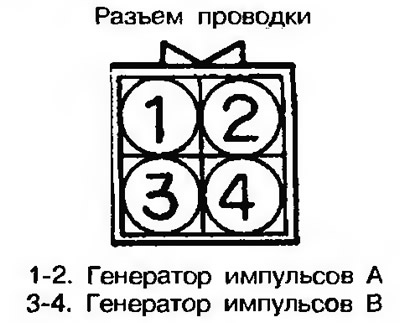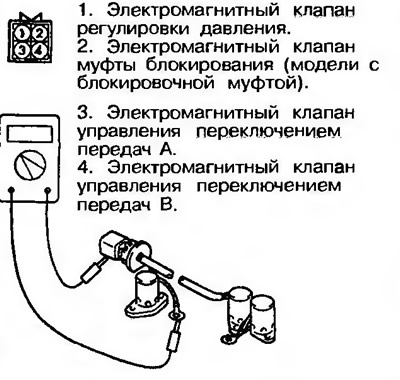Pulse generator
56. Measure the resistance between terminals 1 and 2 or 3 and 4 (pic. 11.165). Rated resistance: 245 ohms at 20°C.

Pic. 11.165. Measure the resistance between terminals 1 and 2 or 3 and 4
57. Too little resistance indicates a short circuit, while too much resistance indicates an open circuit. In both cases, the pulse generator assembly must be replaced.
Solenoid valves
58. Measure the resistance between the terminal and the body of the individual solenoid valves (rice, 11.166).

Pic. 11.166. Measure resistance between terminal and housing of individual solenoid valves
Rated resistance:
- pressure control solenoid valve - 3 Ohm at 20°C;
- shift control solenoid valve - 22 Ohm at 20°C;
- lock-up clutch solenoid valve - 3 ohm at 20°C F4A21, F4A22, F4A23 (models until 1992) and F4A22-2-UPE2-13 Ohm at 20'C (1993 models) (except F4A22-2-UPE2).
59. Too low resistance indicates a short circuit, too high - an open circuit. In both cases, the corresponding solenoid valve must be replaced.
60. Connect a 12-volt battery between the terminal and the body of each solenoid valve and check for operating noise (pic. 11.167). The valve is OK if such noise is heard. The absence of noise indicates a stuck or clogged valve. In this case, the valve must be changed.

Pic. 11.167. Connect a 12-volt battery between the terminal and the body of each solenoid valve and check for operating noise
